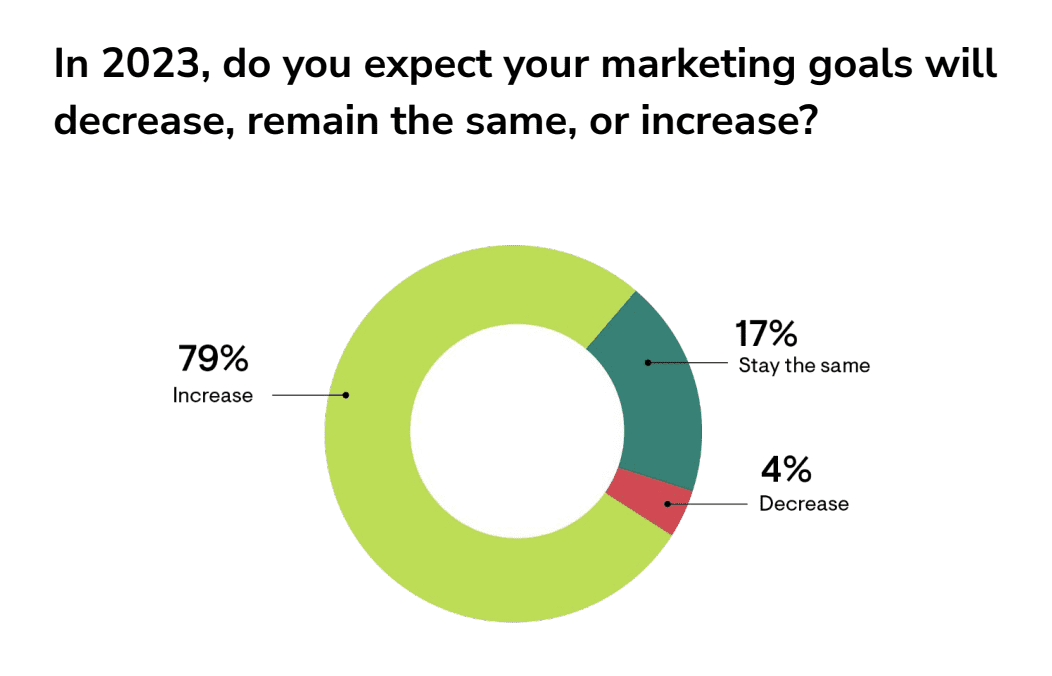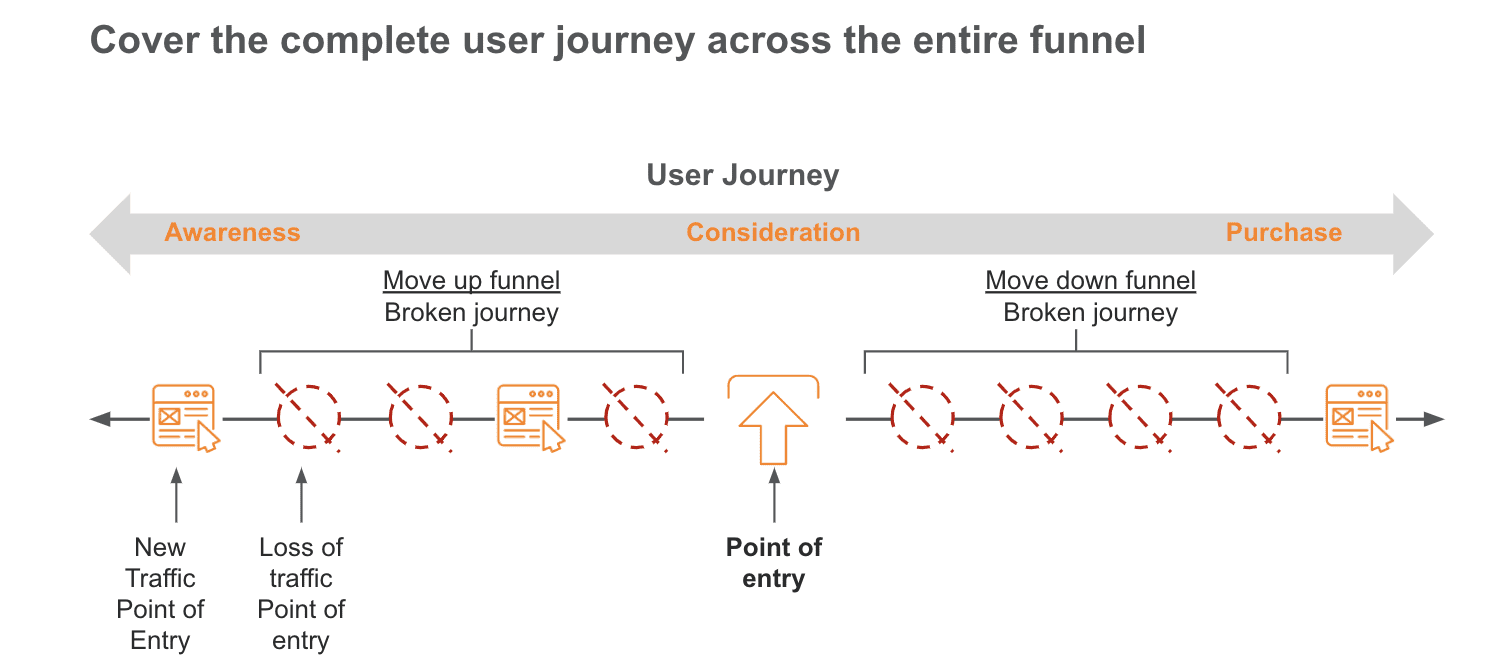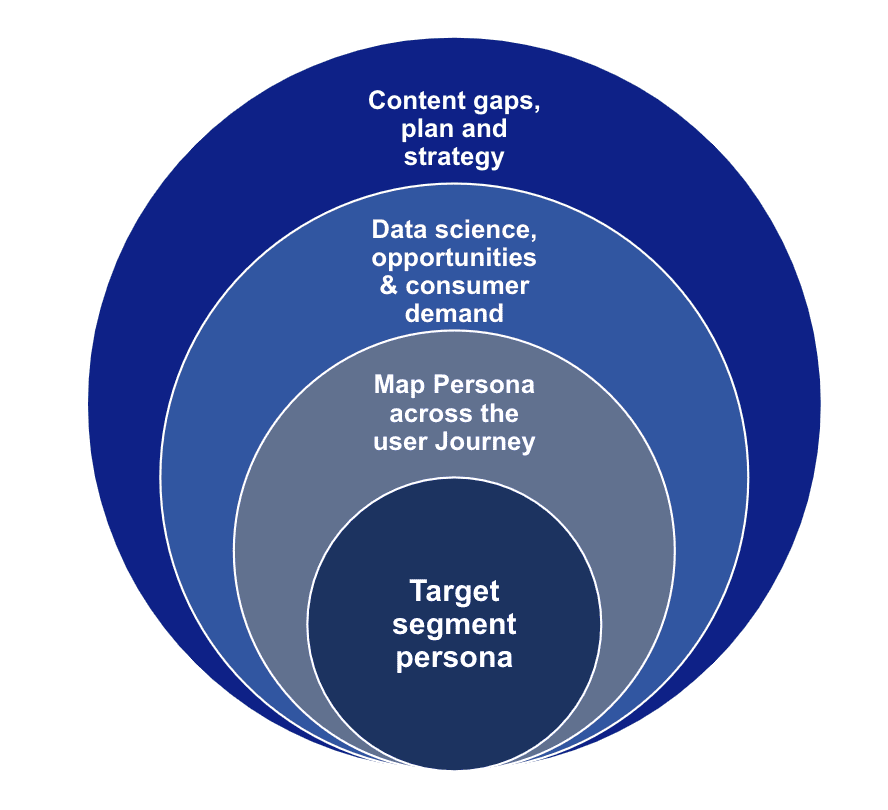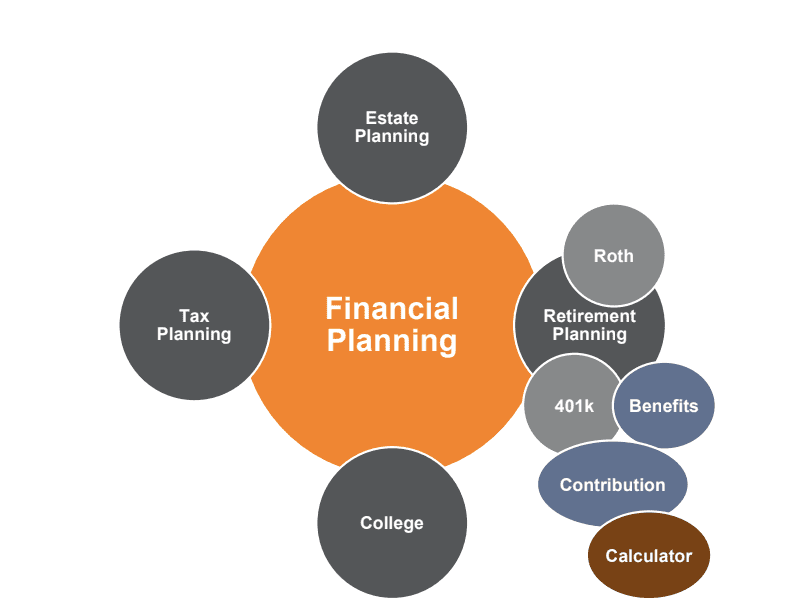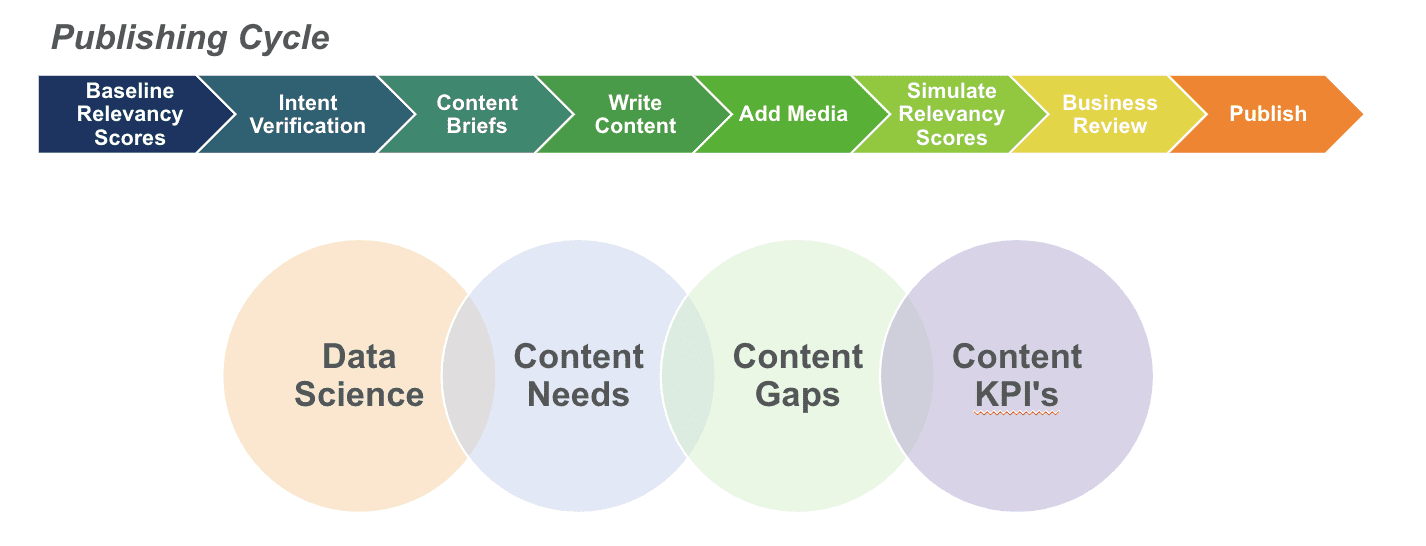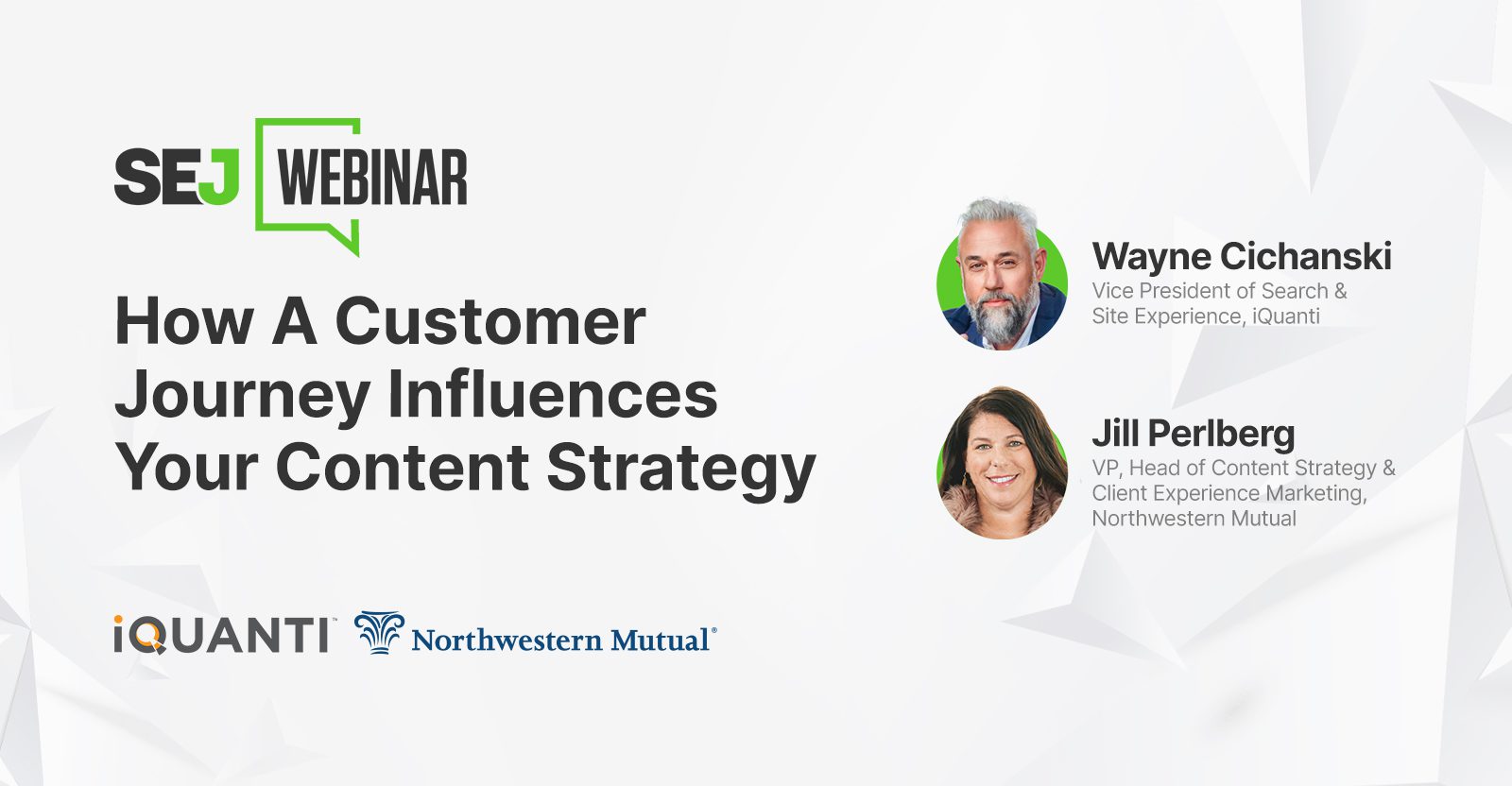Does a new year mean new content marketing best practices? Well, yes and no.
Looking into the new year, there are new things to consider for your content marketing strategy, but many things haven’t changed.
Content marketing is still one of the best ways to ensure your brand remains relevant and continues to drive your site’s organic traffic.
Creating content has taken on many different forms, but there are still a lot of best practices you need to make sure you are implementing if you want it to be found.
This article will review some best practices that content marketers should continue doing and some hot topics emerging in the world of content.
Here are the seven best practices for content marketing in 2023:
- Use the customer’s voice.
- Create content using the hub & spoke content marketing model.
- Optimize your content for result types.
- Always measure your content for ROI.
- AI-generated content is here, but don’t fall for the hype.
- Re-optimize and repurpose your outdated/underperforming content.
- Break down the silos between your internal departments to move faster.
1. Using The Customer’s Voice In Your Content
Using the customer’s voice in your content will always be a best practice in content marketing, and it’s also the most important one.
You need to make sure you are matching your content to what the customer is actually searching for.
Without doing this, you might never be able to reach your target audience, even if they are looking for something you provide.
Keyword research is the bread and butter for creating any content, and a big part of creating relevant content is by making sure you are using the phrases that people actually search for.
2. Create Content Using The Hub & Spoke Content Marketing Model
Google has always cared about ranking websites that show they are authoritative around a particular topic.
What better way to show Google and customers you know what you’re talking about than creating a lot of content around the topic?
One of the best ways to do this is the hub and spoke content marketing model. This content marketing model is related to using the customer’s voice because you need to ensure the content you are writing has demand first.
This isn’t a new model to the world of content marketing, but it’s essential and isn’t going anywhere.
Using the hub and spoke model, you can build authority around a hub, which is typically one of your main business lines or services.
The spoke content is usually composed of questions related to the hub or different parts of the buyer’s journey that connect to the hub.
This way, you can target users in their different stages of searching and make sure Google understands you know what you’re talking about when they come to your site.
By creating hub and spoke content for a specific topic, you become much more authoritative around a topic in Google’s eyes, which can help increase the amount of organic traffic, keyword rankings, and conversions for your company.
3. Create Content Based On Result Types
We’ve known for a while that Google is no longer ten blue links.
However, new types of results appear on Google all the time. As a result, the search engine result pages have become very crowded with a variety of different result types.
Similar to making sure the keywords we are targeting have search volume, we also need to make sure we are structuring our content in a relevant way where Google will want to surface and show our content.
A few result types have become extremely popular this year, the biggest being short-form videos.
Short-form videos typically range from 10 to 30 seconds or up to 5 minutes.
With the rise of TikTok and Instagram Reels, short-form video content is all the rage and has even started appearing on Google as a result type.
When creating any content for your site, make sure to take a look to see what’s already showing up on Google and what competitors are doing.
Visual content or imagery can makes content more digestible and enticing to share on social media. This is also a great way to show up on Google Images, the second biggest search engine behind Google’s main search page.
Audio content, such as podcasts, has also become a big way for people to consume content nowadays.
When you create content, you need to understand how Google feels users are consuming this content based on what is showing up on Page 1 of Google. Then evaluate whether you can create content for these mediums.
4. Measure Your Content For ROI
This isn’t necessarily a new trend, but it’s another one that will always be a best practice for content marketing.
It’s challenging to tie ROI to anything in SEO or the organic channel, unlike paid media or email marketing which is usually more clear-cut with accessible CPC, conversion rates, and other key metrics.
This is why it’s essential to clearly define how you will measure your content for ROI and prove that it drives the organization’s results.
The best way to get more buy-in around SEO or why content is beneficial is to report on how the content is bringing more users to the site or helping them convert.
It’s recommended that you set up reporting, either using an enterprise SEO platform or smaller tools, prior to creating the content so you can measure how your content is doing, such as target keywords now ranking on Page 1, which will lead to an increase in organic traffic and organic conversions.
By consistently doing this, you can tell a story about how being proactive with SEO is worthwhile because you are bringing users to the site today and continuing to drive traffic to this same piece of content indefinitely.
5. AI-generated Content Is Here, But Don’t Fall For The Hype
It’s all happening! AI-generated content has finally arrived to the masses, but don’t fall for the hype.
There have been so many acronyms recently, whether it’s VR (virtual reality), AR (augmented reality), or NFTs (non-fungible tokens), that people believe are going to break through and become the future.
However, none have become the mainstream disruptors they were pitched as. At least, not yet.
AI will be around for the long haul as it can make life so much easier in many different ways.
There are use cases for using AI services such as ChatGPT for research, creating schema, or content ideation, but it’s not recommended to have these services write your content entirely.
Google recently updated its E-A-T guidelines to include an extra “E” for experience. This shows that Google is continuing to focus on authoritative content, and it’s vital that you show the user you know what you’re talking about.
The new “E” around experience seems to be a shot at AI-generated content because Google wants to ensure users are getting the correct information from credible sources – similar to the YMYL algorithm update back in the day.
Google’s helpful content update has also finally finished being rolled out and is impacting websites with unsatisfying or unhelpful content. This is because many websites have started creating content primarily for search engines and not humans.
Humans need to write content meant for other humans.
Use AI to assist with content creation but be careful not to do this in mass like CNET, as they’ve already backtracked on this effort after people noticed many different errors in the content itself.
6. Re-Optimize And Repurpose Your Outdated/Underperforming Content
New year, new content? Well, not always.
By monitoring how the current content on your site is performing, you can identify if there is the ability to re-optimize or repurpose content that might be outdated or underperforming.
One of the best ways to do this is through a content audit to better understand which content is performing well and which content might need a little refresh or some love this year.
There is no point in reinventing the wheel, especially if the content is already good quality but could benefit from other target keywords.
By evaluating your current content, you can identify content gaps where you might need to create new content or find content that could be consolidated so it will perform better together.
When working with clients in the past, there have been countless times when we uncovered three different blog articles focused on the same topic, and none were performing well. Instead of wasting time and energy creating new content, try repurposing some of your site’s existing content to improve it.
Auditing the content on our site will always be a best practice, and it’s a great process to go through as you can uncover a lot of hidden gems while also identifying what other content updates, optimizations, or net new creations the site could benefit from.
7. Break Down The Silos Between Teams Internally (If You Haven’t Already)
This isn’t as much of a best practice for content strategy, but it is a best practice for any company creating content.
Creating content on your site involves a lot of moving pieces. Most people think it’s only the content team’s job, but there are also design/product teams, development teams, legal teams, and even the SEO team.
In any company, specifically enterprises, you need to ensure that all of these departments work together to achieve the same goal – bringing more people to your website and getting them to convert. There are many ways to improve your organic marketing processes to be more efficient.
Meet regularly with other departments and establish processes for creating new content and optimizing existing content. You can boost efficiency and ensure everyone understands their responsibilities throughout the process.
If you do not define the responsibilities of each team beforehand and explain why they are necessary, that department might not prioritize the right things, which will likely result in delays in the content creation process.
The best content marketers work to break down these silos to ensure that content is published effectively. Communication, education, and organization are a big part of this.
In Conclusion
By following these seven best practices, you can ensure your content will be in good hands in 2023 and moving forward.
Overall, you need to be proactive with the insights you find when creating content and communicate with the internal teams about how we might need their help in this process.
Content marketing is one of the best ways for any organization to bring in traffic to their site as it helps continue to educate consumers about the benefits of certain service lines and make them trust that your brand is the right one for their needs.
AI will be a hot topic this year, but don’t do anything too drastic with this development just yet when it comes to content creation. At the end of the day, it’s more important to ensure content is accurate and written for humans by humans.
These best practices are likely things you might have already heard about, but that doesn’t make them any less important.
Instead of focusing on the hot new thing each year, focus on getting these basics down first.
More resources:
Featured Image: Jirsak/Shutterstock




